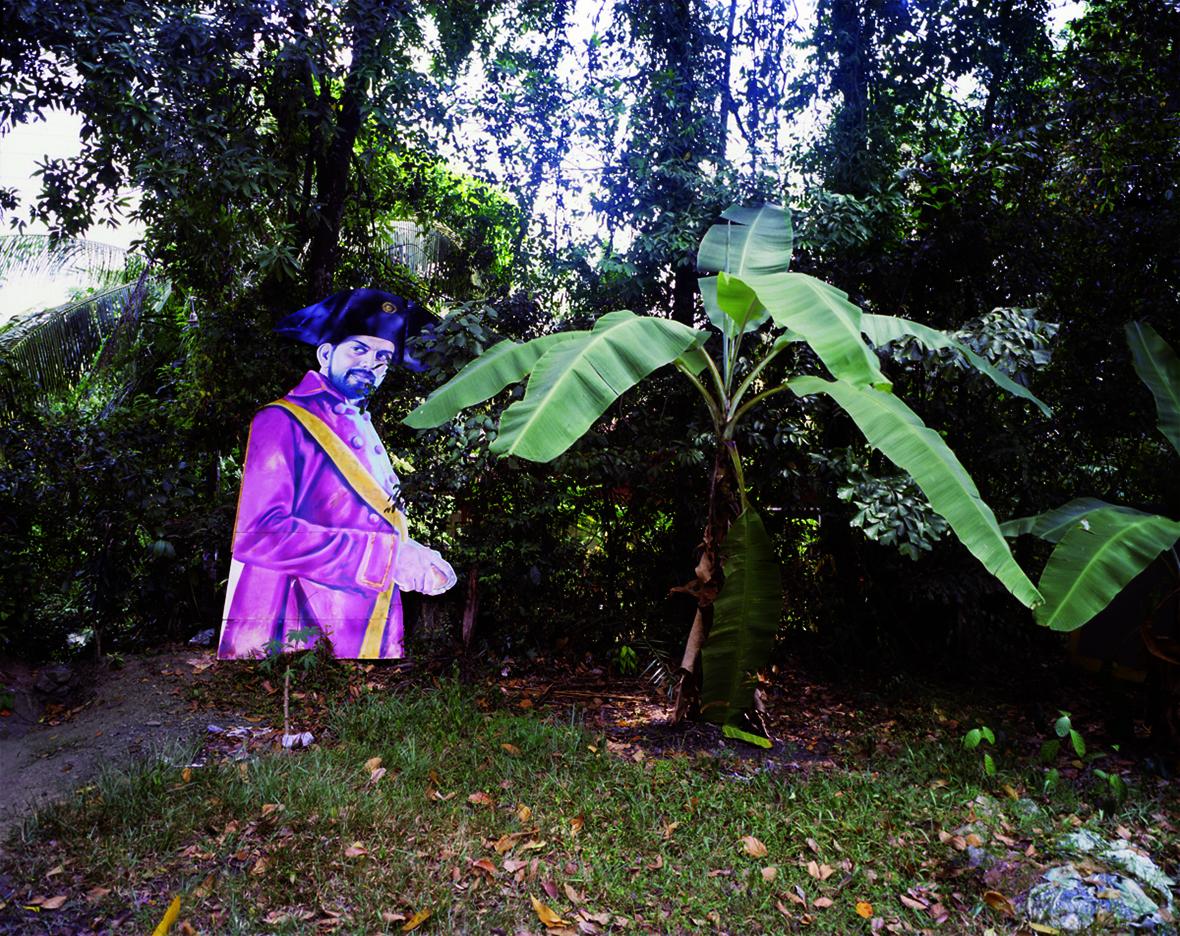Shooting Sri Lanka: Abby Robinson on Sri Lankan Film Production
In 2004, Abby Robinson received a grant from the American Institute for Sri Lankan Studies (AISL) to spend the following two summers photographing the practices of film production in Sri Lanka. She visited the sets of several films, each of which reflected a specific form of cinema’s relationship with the filmed space of Sri Lanka. The period was also a brief respite from the cycles of civil war that had gripped the country for over two decades by then.
Apart from its own difficult history that had kept a thriving industry from growing deep roots, Sri Lanka often became a surrogate location for Indian narratives, that served to conceal its landscape in the South Asian cinematic imagination. As Robinson notes, “Although filmmakers like Lester James Peries liked to shoot in Sri Lanka’s natural environment, foreign filmmakers used built sets along with the location as a surrogate one (usually for India).” The interaction between a “natural environment” for indigenous productions and built environments for foreign ones reveals an anxiety over controlling the significance of the filmed landscape. Approaching film production as a site of labour, “experience and infrastructure”, her photo essay follows the complicated trajectories of several Sinhalese films as well as Tamil ones, noting their discourse of difference (hardened by the brutal reality of war) that percolates into their narrative styles, shooting methods and uses of landscape. Her anthropological account invites us to complicate the reading of such filmed spaces in their postcolonial avatars, a narrative that is inevitably different from a colonial understanding of filmed locations that is explored richly by Priya Jaikumar in Where Histories Reside (2019).
Jaikumar’s project of “retrieving a film’s background as a point of focus and analyzing it as a distinctive aesthetic and produced entity” and the environment that implies itself off-camera assumes a thicker texture with the implication of surrogacy, whereby films as widely different as Deepa Mehta’s Water or Anurag Kashyap’s Bombay Velvet (shot in Sri Lanka in the 2010s, after the war was over) must be submitted to a common spatial logic that is as imaginary as determined by the ‘off-screen’ politics of the country and their difficult relationship with its neighbour, especially on the issue of Tamil identity. Robinson traces the back-and-forth of support and resistance to any simple acts of South Asian solidarity that are promoted in the cynical interests of industrial-economic growth as it comes up short in its politics of accountability for the shared population between the nations—the Tamils. Her essay opens up a landscape for greater visibility but cautions against any expectation of transparency in the scenery.
All images by Abby Robinson, courtesy of the artist.
Click on the image to view the album





